Home>diy>Building & Construction>How Does Buying Land And Building A House Work
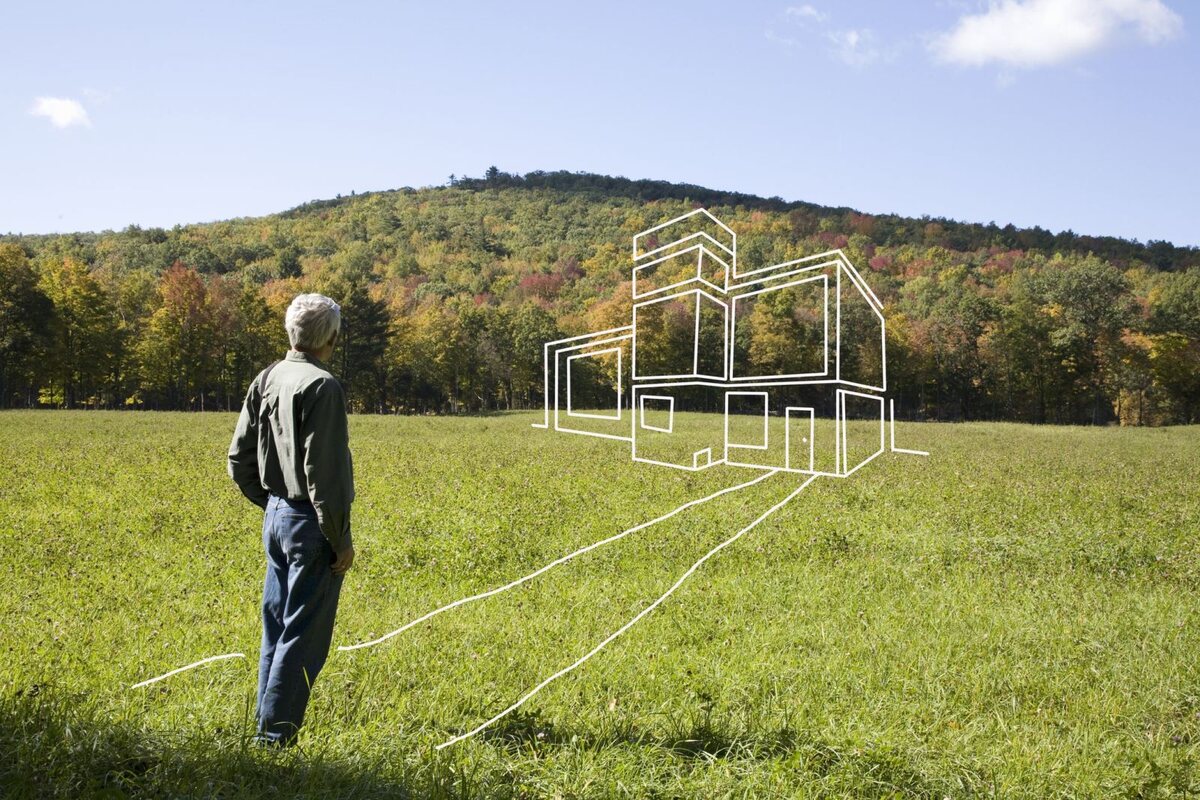

Building & Construction
How Does Buying Land And Building A House Work
Modified: January 3, 2024
Learn how the process of buying land and constructing a house works. Discover the steps involved in building construction and make your dream home a reality.
(Many of the links in this article redirect to a specific reviewed product. Your purchase of these products through affiliate links helps to generate commission for Storables.com, at no extra cost. Learn more)
Introduction
Building a house is an exciting endeavor that allows you to create a home that perfectly suits your needs and desires. From the initial concept to the final construction, the process of buying land and building a house requires careful planning, research, and collaboration with professionals.
Whether you’re a first-time homebuyer or someone looking to upgrade to a custom-built home, understanding how the process works can help you navigate the journey with confidence. This article will guide you through the step-by-step process of purchasing land and building a house, providing insights into the various stages and considerations involved.
Before diving into the details, it’s essential to emphasize the importance of thorough research and planning. Building a house is a significant investment of time, money, and resources, and taking the time to gather information and make informed decisions will ultimately lead to a successful and satisfying outcome.
Throughout the process, you’ll encounter various decisions to make, including choosing the right location, hiring professionals, designing the layout, selecting materials, and managing the construction. By having a clear understanding of the steps involved, you can streamline the process and ensure everything progresses smoothly.
Now, let’s delve into the first stage of buying land and building a house: conducting research and planning.
Key Takeaways:
- The process of buying land and building a house involves crucial steps such as thorough research and planning, finding the right plot of land, hiring experienced professionals, obtaining permits, securing financing, and managing the construction process effectively.
- Successfully navigating the journey of building a dream home requires patience, flexibility, and clear vision. By following the outlined steps, individuals can create a space that reflects their personality and meets their needs, resulting in a home cherished for years to come.
Research and Planning
Research and planning are crucial components of the process when buying land and building a house. This stage involves gathering information, setting goals, and defining your budget and priorities.
Firstly, it’s essential to research and identify the area in which you want to purchase land. Consider factors such as proximity to amenities, schools, transportation, and the overall quality of the neighborhood. Additionally, analyze the market trends and property prices in the area to ensure you make an informed decision.
Next, establish your goals and priorities for your new home. Do you want a spacious backyard, multiple bedrooms, a modern kitchen, or a home office? Defining your needs and desires will help you communicate your vision to professionals involved in the building process.
After determining your goals, it’s crucial to set a budget. Consider not just the cost of buying the land and building the house, but also additional expenses such as permits, architectural fees, and landscaping. Understand your financial capacity and consult with a mortgage lender or financial advisor to ensure you have a realistic budget in place.
Another aspect of the planning stage is determining the timeline for the project. Consider any time constraints or deadlines that may affect the construction process. It’s vital to factor in the time needed for design, obtaining permits, and hiring contractors to ensure a smooth and efficient progression of the project.
During the planning stage, it’s also wise to start assembling a team of professionals who will assist you throughout the process. This team typically includes an architect or designer, a builder or contractor, and possibly a project manager. Research and gather recommendations to find reputable and experienced professionals who align with your vision and budget.
Additionally, familiarize yourself with local building codes and regulations. Different jurisdictions have specific requirements that dictate construction methods, setback distances, and even architectural styles. Understanding these regulations early on will help you avoid any complications or delays during the construction process.
By conducting thorough research and carefully planning, you’ll lay a solid foundation for the rest of the process. The next step is finding and purchasing the right plot of land, which we’ll explore in the following section.
Finding and Purchasing Land
Once you have completed the research and planning stage, the next step in buying land and building a house is finding and purchasing a suitable plot of land. This stage requires careful consideration and evaluation to ensure you choose the right location for your future home.
Start by working with a real estate agent who specializes in land transactions. They can help you identify potential properties that align with your goals and budget. Alternatively, you can explore online listings, attend property auctions, or even approach local landowners who may be interested in selling.
When evaluating potential land options, consider factors such as size, shape, terrain, and access to utilities. Determine whether the land is suitable for your desired home design and whether it complies with local building regulations.
It’s also crucial to assess the neighborhood and surrounding area. Look for amenities such as schools, shopping centers, parks, and healthcare facilities. Consider factors like noise levels, traffic, and future development plans that could impact the value and livability of the land.
Once you identify a property that meets your criteria, conduct due diligence. This involves conducting surveys, soil tests, and environmental assessments to ensure the land is suitable for construction. Engage professionals such as surveyors and engineers to evaluate the land and provide expert advice.
After completing due diligence and confirming your interest in the property, the next step is to negotiate a purchase agreement with the seller. Work with your real estate agent or attorney to draft and negotiate the terms of the agreement, including the purchase price, contingencies, and closing date.
Upon reaching an agreement, it’s essential to engage a real estate attorney to handle the legal aspects of the transaction. They will conduct a title search to ensure there are no liens, encumbrances, or legal issues associated with the land. The attorney will also guide you through the closing process and ensure all necessary paperwork and documentation are completed accurately.
Once the closing process is complete, the land officially becomes yours, and you can move forward with the next steps of the building process. These steps involve hiring professionals and designing your dream home, which we will explore in the following sections.
Hiring Professionals
When it comes to buying land and building a house, hiring the right professionals is paramount to a successful and smooth construction process. These professionals bring their expertise and knowledge to ensure your vision is translated into a well-designed and structurally sound home.
One of the key professionals you’ll need to hire is an architect or designer. They will work closely with you to understand your requirements, preferences, and budget. Based on this information, they will create a conceptual design for your home, taking into account factors such as layout, aesthetics, functionality, and sustainability.
It’s important to select an architect or designer who has experience in residential projects and shares a similar design philosophy as you. Look through their portfolio, check for reviews or testimonials, and perhaps even visit some of their completed projects to get a sense of their work and style.
In addition to an architect, you’ll need to hire a builder or contractor to oversee the construction process. Look for professionals who have a solid reputation, relevant experience, and are properly licensed and insured. Get multiple quotes and compare them based on their expertise, track record, and proposed timeline for the project.
During the hiring process, make sure to ask for references and contact previous clients to inquire about their experience with the professionals you’re considering. Discuss the scope of work, project management approach, and any additional services they offer, such as obtaining permits or sourcing materials.
Depending on the complexity of your project, you may also need to hire additional professionals, such as engineers, land surveyors, interior designers, or landscape architects. These experts will contribute their specialized knowledge to ensure the structural integrity, functionality, and aesthetic appeal of your home.
Communication and collaboration are essential when working with professionals. Clear communication of your expectations, budget constraints, and timeline will help ensure everyone is on the same page from the beginning. Regular meetings and updates throughout the construction process will allow you to address any concerns or make necessary adjustments.
Remember, hiring professionals is an investment in the quality and success of your home construction. Take the time to research and select the right individuals or firms for your project, as their expertise and guidance will play a significant role in bringing your dream home to life.
Once you have assembled your team of professionals, the next step is to begin the design phase and create a home that reflects your unique tastes and requirements. We will explore this process in the next section.
Designing Your Home
Designing your home is an exciting and creative phase in the process of buying land and building a house. This stage allows you to shape the layout, style, and interior elements of your dream home.
Working closely with your architect or designer, you’ll start by developing a detailed design brief that outlines your preferences, requirements, and budget. This brief will serve as a guide for the design process and help ensure that your home is tailored to your specific needs.
During the design phase, your architect or designer will create floor plans, elevation drawings, and 3D renderings to present different design options. These visual representations will help you visualize the final outcome and make informed decisions about the layout, room sizes, and overall aesthetics of your home.
Consider factors such as natural light, flow between spaces, and functionality when reviewing and providing feedback on the design options. It’s essential to strike a balance between your personal style preferences and practical considerations.
In addition to the overall layout, you’ll also need to make decisions about the exterior finishes, roofing materials, windows, doors, and landscaping. Your architect or designer will guide you in selecting materials that are both aesthetically pleasing and durable, considering factors such as climate and maintenance requirements.
The design phase also involves selecting interior finishes, such as flooring, cabinetry, countertops, fixtures, and lighting. Depending on your preferences, you can choose from a wide range of materials, styles, and colors to create the atmosphere and ambiance you desire for each room.
It’s crucial to communicate openly with your architect or designer throughout the design process. Provide clear feedback and ask questions to ensure that your vision is accurately translated into the final design. Be open to their professional advice and suggestions, as they may offer insights and ideas that enhance the functionality and aesthetics of your home.
Once the design is finalized, you will move on to obtaining permits and approvals from the relevant authorities. These permits ensure that your home meets local building codes and regulations, and that the construction process adheres to the specified guidelines.
The design stage is an opportunity to infuse your personal style and preferences into your future home. By collaborating closely with your architect or designer and providing clear feedback, you can create a home that truly reflects your unique taste and vision.
In the next section, we will discuss the important step of obtaining permits and approvals before construction can begin.
Obtaining Permits and Approvals
Before construction can commence on your new home, it is crucial to obtain the necessary permits and approvals from the relevant authorities. These permits ensure that your building plans comply with local building codes and regulations.
The process of obtaining permits and approvals can vary depending on your location and the scope of your project. However, the following steps are typically involved:
- Submission of Building Plans: Your architect or designer will prepare detailed building plans that outline the design, structure, and construction methods. These plans will need to be submitted to the local building department or planning agency for review.
- Plan Review: The building department or planning agency will conduct a thorough review of your building plans to ensure compliance with local codes and regulations. This review may cover aspects such as structural integrity, zoning requirements, fire safety, and environmental impact.
- Modifications and Resubmission: In some cases, the reviewing authority may request modifications or further information to address any issues or concerns identified during the review process. You will need to work with your architect or designer to make the necessary revisions and resubmit the plans for review.
- Approval and Issuance of Permits: Once your building plans meet all the requirements and are approved, the building department or planning agency will issue the necessary permits. These permits may include building permits, plumbing permits, electrical permits, and any other permits specific to your project.
It’s important to note that the permit process may also involve inspections at various stages of the construction process. Inspectors will visit the site to ensure that the work is being done according to the approved plans and local regulations.
Obtaining permits and approvals is a crucial step in the building process, as it ensures that your home is constructed safely, adheres to building codes, and meets all legal requirements. Failure to obtain the necessary permits can result in fines, legal complications, and potential issues when selling or reselling the property.
Working with professionals who are experienced in navigating the permit process is essential. Your architect, designer, or builder will have knowledge of local regulations and can assist you in preparing the required documentation, submitting the applications, and coordinating with the building department or planning agency throughout the process.
Once you have obtained the necessary permits and approvals, you can proceed with the next stage of the construction process: securing financing for your project. This will be discussed in the following section.
Before buying land, research zoning laws, soil quality, and access to utilities. When building, hire a reputable contractor and obtain all necessary permits.
Financing Your Project
Financing your project is a crucial step when buying land and building a house. Unless you have sufficient funds to cover the cost of construction upfront, you will likely need to secure a construction loan or a mortgage to finance your project.
Construction loans are specifically designed to finance the construction of a new home. These loans typically have a shorter term and higher interest rates compared to traditional mortgages. The loan amount is usually distributed in stages, known as draws, as the construction progresses. This ensures that the funds are released in line with the completion of specific phases of the project.
In order to secure a construction loan, you will need to provide detailed construction plans, a comprehensive cost estimate, and a timeline for the project. The lender will evaluate the feasibility and profitability of the project, as well as the borrower’s creditworthiness and ability to repay the loan.
Another option for financing your project is to obtain a traditional mortgage. This is typically done when the land and the construction are bundled together as one loan. In this case, the lender will require an appraisal of the property to determine its value and suitability for a mortgage. The borrower will need to demonstrate the ability to make mortgage payments based on their income, credit history, and debt-to-income ratio.
It’s important to shop around and compare offers from different lenders to ensure that you secure the most favorable terms for your financing. Consider factors such as interest rates, repayment terms, fees, and flexibility in accessing funds during the construction process.
Keep in mind that financing your project also involves other costs, such as closing costs, fees for permits and inspections, and potential cost overruns during construction. It’s crucial to budget for these expenses and have a contingency fund in case of unforeseen circumstances or changes in the scope of the project.
Working with a mortgage lender or financial advisor can provide valuable guidance in navigating the financing process. They can help you understand the options available to you based on your financial situation and goals, and assist you in preparing the necessary documentation for loan applications.
By securing the right financing for your project, you can ensure that you have the necessary funds to complete the construction of your new home and turn your vision into reality.
Once the financing is in place, the construction process can begin. In the next section, we will explore the various stages involved in the construction of your dream home.
Construction Process
The construction process is where your dream home starts to take shape. It involves a series of stages, from site preparation to the final touches, that require careful coordination and collaboration between you, your contractor, and the various subcontractors involved.
The first step in the construction process is site preparation. This includes clearing the land, leveling the terrain, and preparing the foundation. Excavation work may be required to create a solid and level surface for the construction of the home.
Once the site is prepared, the foundation is laid. The type of foundation will depend on factors such as soil conditions and the design of the home. Common types of foundations include slab-on-grade, crawl space, and basement. The foundation provides the structural support for the entire home.
After the foundation is complete, the next stage is framing. This involves constructing the wooden or metal framework of the house, including the walls, floor joists, and roof trusses. Framing is a critical stage as it sets the structure and shape of the home.
With the framing in place, the next step is to install the roof, windows, and exterior doors. This will protect the home from the elements and allow for further work to be done inside.
Following exterior work, the construction process moves indoors. This stage involves electrical and plumbing rough-ins, where the wiring, outlets, switches, and plumbing pipes are installed within the walls. It is essential to ensure that the electrical and plumbing systems are properly installed to meet safety codes and functional requirements.
Insulation and drywall installation come next. Insulation helps regulate temperature and reduce energy consumption, while drywall creates the finished walls and ceilings. It is crucial to ensure proper insulation to maximize energy efficiency in your home.
Once insulation and drywall are in place, the interior finishes can be installed. This includes flooring, cabinetry, countertops, lighting fixtures, and paint. These finishes will give your home its unique style and personality.
Throughout the construction process, it’s important to have regular communication and site visits with your contractor. This will allow you to address any concerns, make necessary adjustments, and ensure that the work is progressing according to plan.
As the construction nears completion, a final walkthrough inspection is conducted to identify any remaining issues or touch-ups needed. Once all inspections are passed, and any necessary corrections are made, you can proceed with the final stage of the construction process: move-in and occupancy.
During move-in, it’s important to take the time to familiarize yourself with the various features and systems of your new home. Understand how to operate the electrical, plumbing, and HVAC systems, and ensure that everything meets your expectations.
With the construction process complete, you can now enjoy your newly built dream home. However, it’s important to note that the homebuilding process can take several months or even longer, depending on the size and complexity of the project.
In the next section, we will discuss the importance of monitoring and managing the build to ensure a successful and smooth construction process.
Monitoring and Managing the Build
Monitoring and managing the build is a crucial aspect of the construction process when buying land and building a house. It involves overseeing the progress, quality, and budget of the project to ensure a successful and smooth construction process.
Effective monitoring and management require consistent communication and collaboration with your contractor and the various professionals involved in the project. Here are some key considerations to help you monitor and manage the build effectively:
Regular Site Visits: Make it a point to visit the construction site regularly to assess the progress of the build. This allows you to see the work firsthand and discuss any concerns or questions with your contractor.
Communication: Maintain open and clear communication with your contractor. Regularly discuss the project’s progress, any changes or modifications, and address any issues that may arise. Keep a record of all discussions and agreements to ensure clarity and accountability.
Budget Management: Continuously monitor the project’s budget to ensure it remains within your allocated funds. Review and approve any change orders or additional expenses to avoid unexpected financial challenges.
Timeline Management: Stay on top of the project’s timeline and ensure that it aligns with your expectations. Regularly communicate with the contractor to monitor progress and address any potential delays or issues. A well-managed timeline helps keep the project on track and minimizes disruptions.
Quality Control: Regularly inspect the workmanship and quality of materials used in the construction. Address any concerns promptly to ensure that the final result meets your expectations and adheres to high standards of craftsmanship.
Documentation: Maintain detailed documentation throughout the construction process. This includes contracts, change orders, invoices, and any correspondence related to the project. Keeping organized records will help you track progress, make informed decisions, and handle any legal or financial matters that may arise.
Problem Solving: Be proactive in identifying and addressing potential issues. Communicate any concerns or obstacles to your contractor and collaborate on finding solutions. Taking prompt action can help avoid costly delays or mistakes.
Professional Assistance: Consider hiring a project manager or employ the services of a construction management company if you prefer to have professional oversight of the build. These individuals or companies can handle the day-to-day management, coordination, and monitoring of the construction process on your behalf.
By actively monitoring and managing the build, you can ensure that the construction process runs smoothly, remains within budget, and meets your expectations. Regular communication, attention to detail, and proactive problem-solving will contribute to a successful outcome.
In the next section, we will discuss some common challenges and potential delays you may encounter during the construction process, as well as how to address them effectively.
Read more: Which Is Cheaper, Building Or Buying A House
Addressing Challenges and Delays
Challenges and delays are almost inevitable during the construction process when buying land and building a house. However, being prepared and proactive in addressing these issues can help minimize their impact and keep the project on track. Here are some common challenges and how to address them effectively:
Weather-related Delays: Inclement weather can significantly impact the construction schedule. Heavy rain, snow, or extreme temperatures can make it unsafe or impossible to conduct certain construction activities. While weather delays are beyond anyone’s control, working with your contractor to develop a contingency plan can help mitigate their impact on the overall timeline. Consider adjusting the construction schedule, adding additional resources, or focusing on interior work during unfavorable weather conditions.
Supply Chain Issues: Delays in material deliveries or shortage of supplies can disrupt the construction process. It’s essential to work closely with your contractor to identify potential supply chain challenges and find alternative solutions. Maintaining open communication with suppliers and having backup options for critical materials can help minimize delays caused by supply chain issues.
Contractor and Subcontractor Availability: The availability and scheduling of contractors and subcontractors can sometimes pose challenges, especially if they are in high demand. Clear communication with your contractor is essential to ensure that work is scheduled and coordinated efficiently. Additionally, having backup options or a contingency plan in place can help address any unforeseen availability issues that may arise.
Changes in Design or Scope: It’s not uncommon for homeowners to make changes or modifications to the design or scope of the project during construction. While changes can enhance the final result, they can also impact the timeline and budget. It is important to communicate any desired changes promptly to your contractor and evaluate the potential impact on the project. Work together to assess the feasibility, cost, and timeline adjustments that may be necessary to accommodate the changes effectively.
Quality Control and Inspections: Regular inspections are essential to ensure that the construction meets quality standards and code requirements. Address any issues or discrepancies promptly with your contractor. Engage the necessary professionals, such as architects or engineers, to assess and provide guidance on the best course of action to rectify any concerns.
Financing or Budget Constraints: Unforeseen financial challenges can arise during the construction process. It’s important to maintain open communication with your lender, regularly review the project’s budget, and address any potential financial concerns promptly. Discuss options with your contractor, such as value engineering or alternative materials, to help manage budget constraints without compromising the quality of the build.
Proactively addressing challenges and delays requires effective communication, collaboration, and flexibility. Maintain regular communication with your contractor, consult with professionals when needed, and remain open to considering alternative solutions to keep the project moving forward.
In the next section, we will discuss the final steps of the construction process, including the finishing touches and the excitement of moving into your new home.
Finalizing the Construction
As the construction process nears completion, attention turns to the final stages of building your dream home. This phase involves putting the finishing touches on the construction, conducting final inspections, and preparing for the exciting milestone of moving into your new home.
During this stage, the focus is on ensuring that all systems and components of the home are in proper working order. This includes completing the installation of fixtures, such as plumbing and electrical fixtures, as well as HVAC systems and appliances. Your contractor will conduct thorough testing to ensure that everything functions as intended.
Part of finalizing the construction involves addressing any outstanding issues or punch list items identified during the final walkthrough inspection. These may include minor cosmetic touch-ups, adjustments to doors or cabinets, or any other last-minute adjustments required to meet your satisfaction.
Once all construction work is complete, the final inspections will be conducted. These inspections are typically performed by local building code officials or third-party inspectors to ensure compliance with safety, health, and construction standards. This is an important step to obtain the necessary certificates of occupancy and sign-offs, allowing you to legally occupy and move into your new home.
Before moving in, it’s a good idea to thoroughly clean the entire house to ensure a fresh and welcoming environment. This will help you start your new chapter on a clean slate and remove any lingering dust or debris from the construction process.
As you prepare to move into your new home, it’s also important to familiarize yourself with the various features and systems it offers. Take the time to learn how to operate and maintain the HVAC system, plumbing system, electrical panel, and any other equipment or appliances that may require attention.
Documenting any warranties or guarantees associated with the materials, appliances, or systems of your home is also important during this stage. Maintaining organized records and filing any necessary paperwork will help simplify the process of addressing any future issues or service needs.
Lastly, celebrate the completion of your new home! Take a moment to appreciate the hard work that went into building your dream home and enjoy the excitement of moving in. Make it a special occasion by inviting friends and family to share in the joy of your accomplishment.
Remember that finalizing the construction is just the beginning of your journey as a homeowner. Continue to maintain your home, make any necessary repairs or improvements, and take pride in creating a space that reflects your personality and fulfills your needs.
Congratulations on successfully completing the construction process and creating your dream home!
Conclusion
Building a house from buying the land to finalizing the construction is a complex and rewarding process. It requires careful research, planning, and collaboration with professionals to ensure a successful outcome. By following the steps outlined in this article, you can navigate the journey of building your dream home with confidence.
The research and planning stage is crucial, as it sets the foundation for the entire project. During this phase, take the time to identify the perfect location, establish your goals and budget, and assemble a team of professionals who will bring your vision to life.
Finding and purchasing the right plot of land is a significant milestone in the process. Consider factors such as size, location, and amenities to ensure it meets your needs and aligns with your future home design.
Hiring professionals, such as architects, designers, and contractors, is essential to the success of your project. Choose experienced and reputable individuals who understand your vision and can bring it to fruition. Collaboration and clear communication throughout the design and construction process are key to achieving your desired outcome.
Obtaining permits and approvals is a critical step to ensure that your home meets local building codes and regulations. Make sure to engage with the relevant authorities and adhere to the required guidelines.
The financing stage is where you secure the necessary funds to fulfill your dream. Explore different financing options, work with lenders, and develop a realistic budget that covers all aspects of the construction process.
The construction process involves careful monitoring, managing challenges and delays, and addressing any issues that may arise. Regular communication with your contractor and the various professionals involved is essential for a smooth progression of the project.
As the construction nears completion, the finalization stage involves adding the finishing touches, conducting inspections, and preparing for the exciting moment of moving into your new home. Take the time to familiarize yourself with the systems and features of your home, and celebrate the achievement of bringing your dream to life.
Building a house is an incredible journey that allows you to create a space that truly reflects your personality and meets your needs. It requires patience, flexibility, and a clear vision. By following the steps outlined in this article, you can navigate the process successfully and create a home that you will cherish for years to come.
Congratulations on embarking on this exciting adventure of buying land and building a house. May your new home bring you happiness, comfort, and beautiful memories for many years ahead.
Frequently Asked Questions about How Does Buying Land And Building A House Work
Was this page helpful?
At Storables.com, we guarantee accurate and reliable information. Our content, validated by Expert Board Contributors, is crafted following stringent Editorial Policies. We're committed to providing you with well-researched, expert-backed insights for all your informational needs.


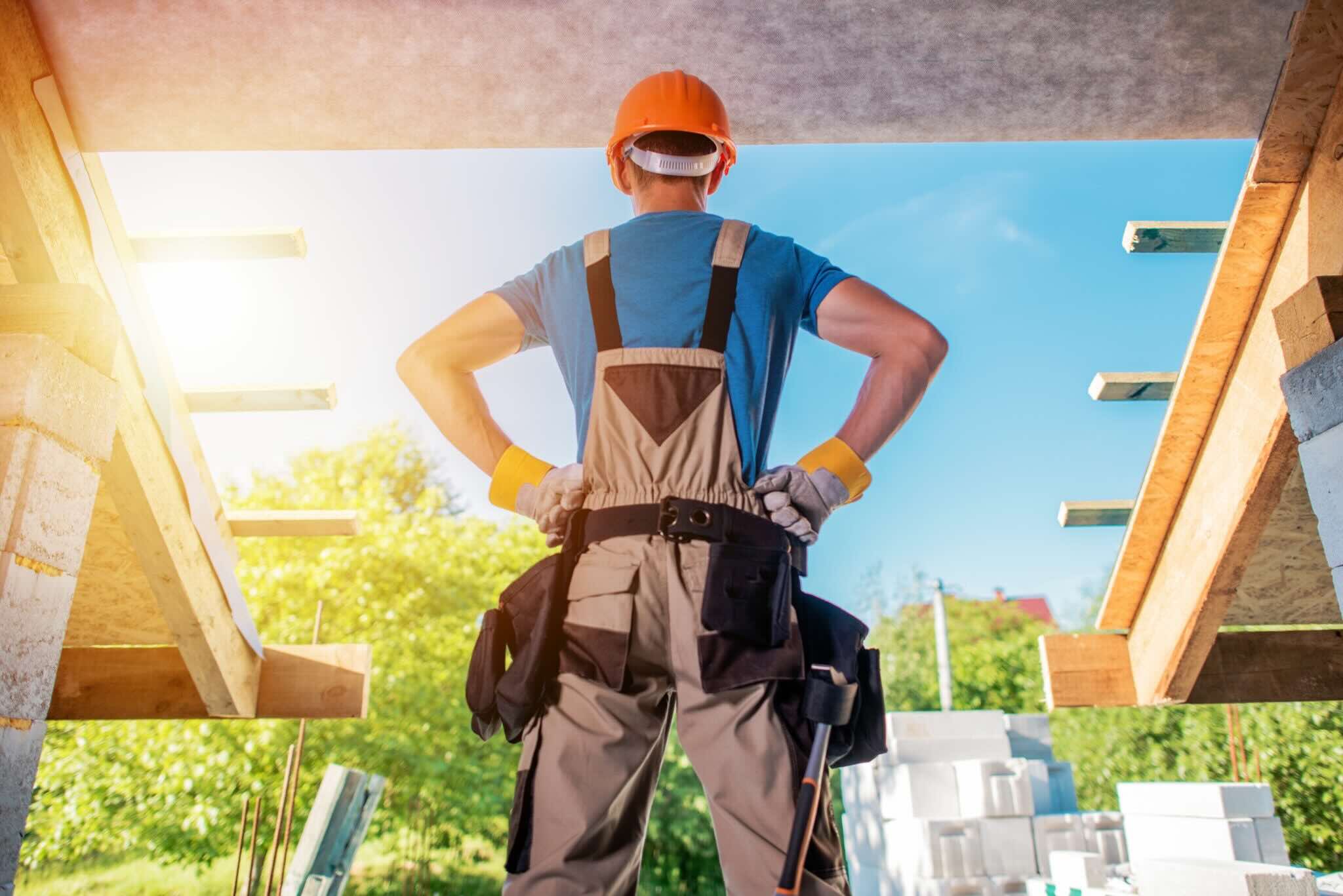
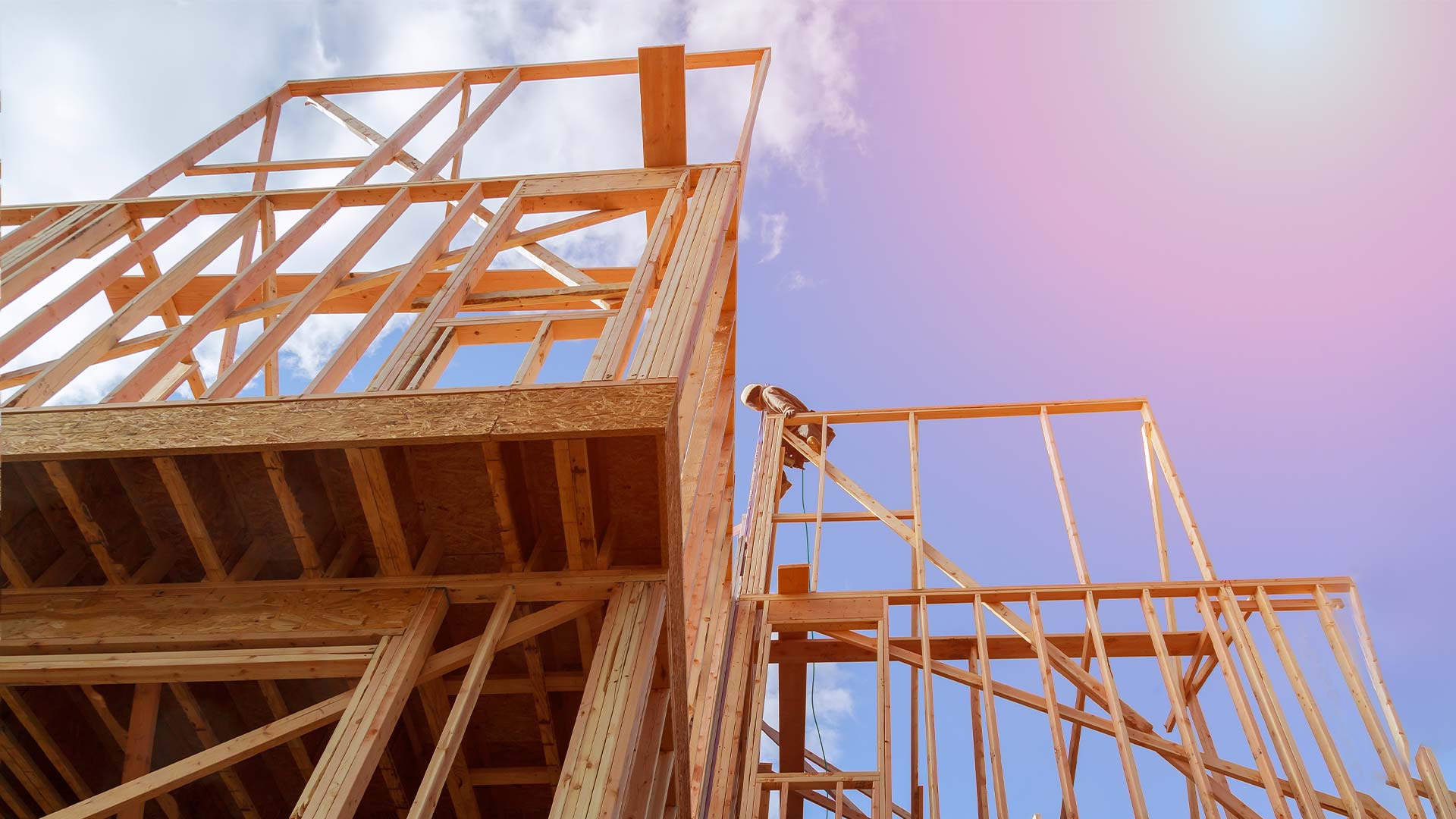
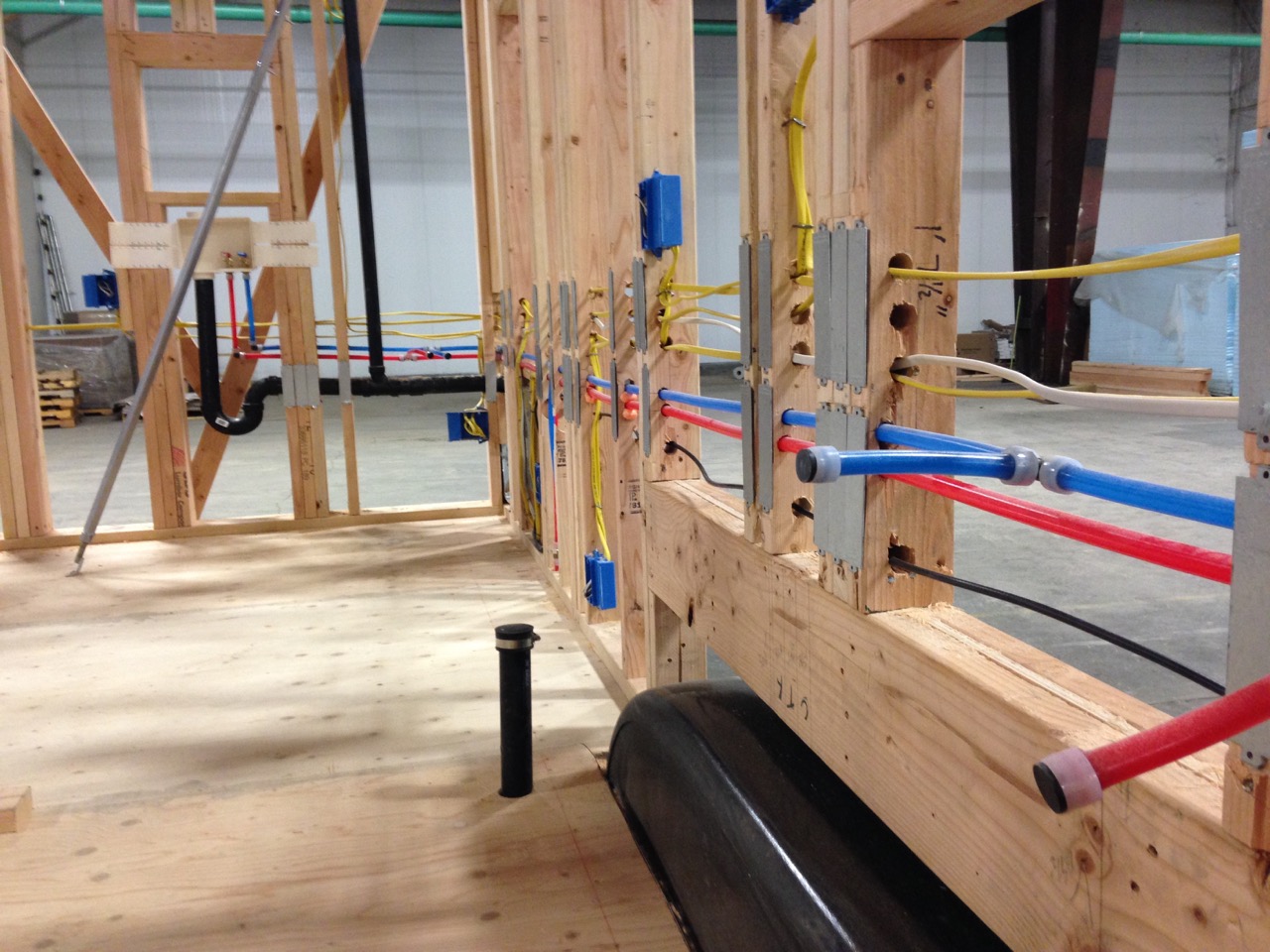



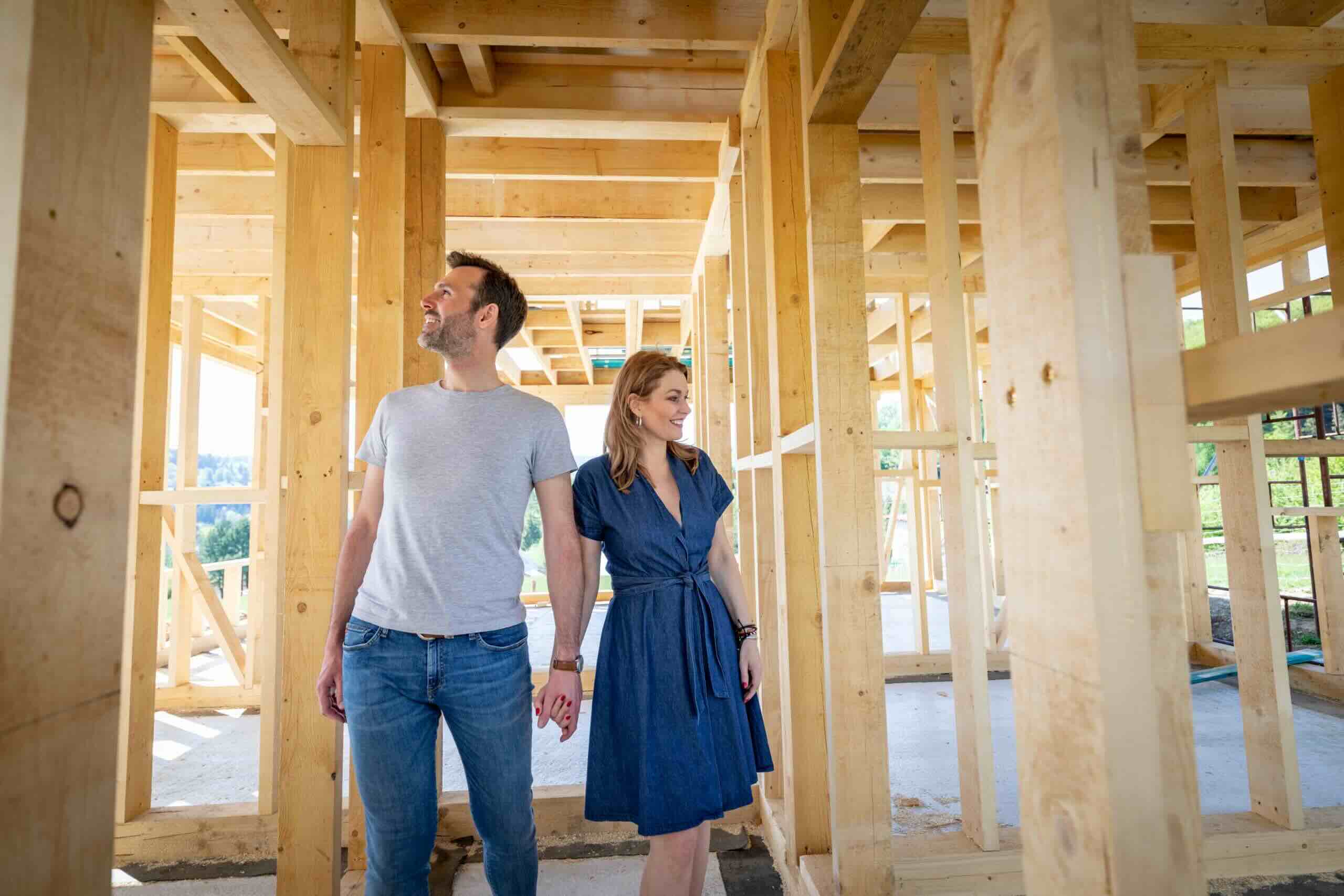



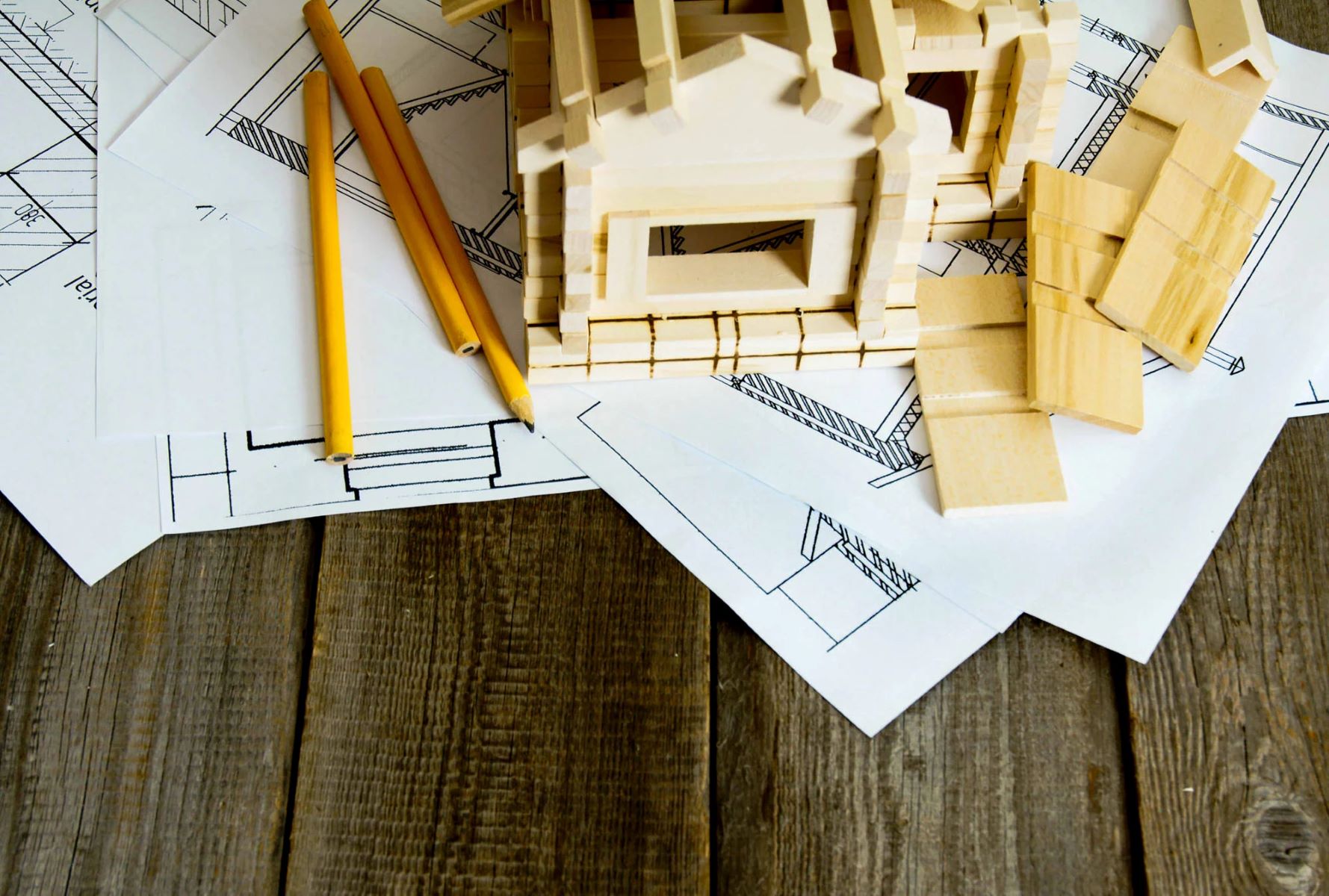

0 thoughts on “How Does Buying Land And Building A House Work”